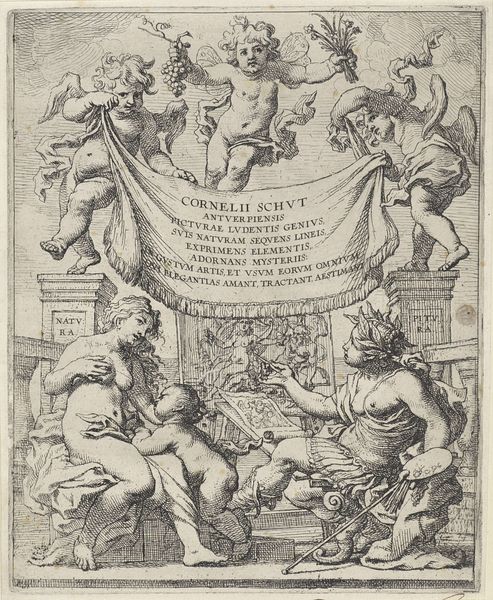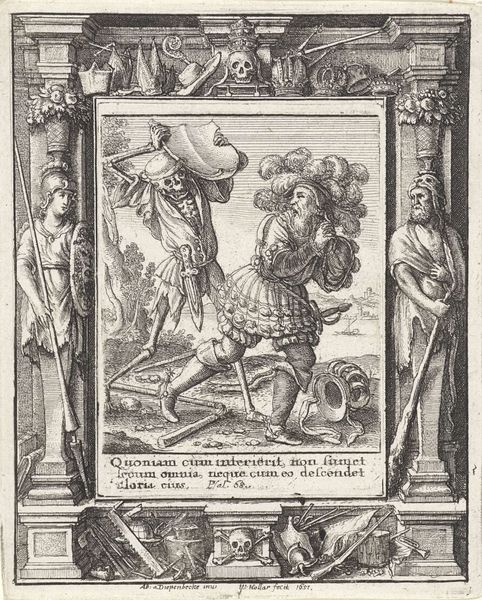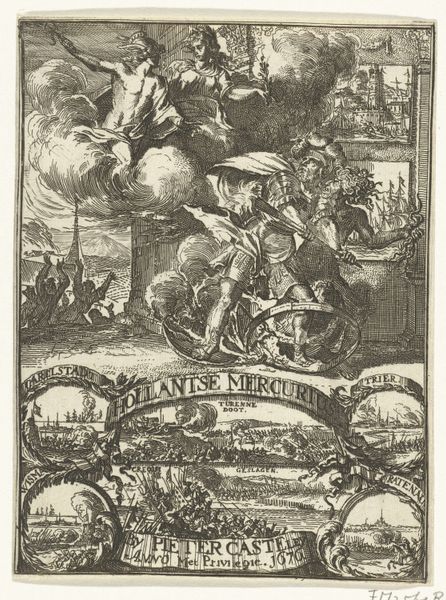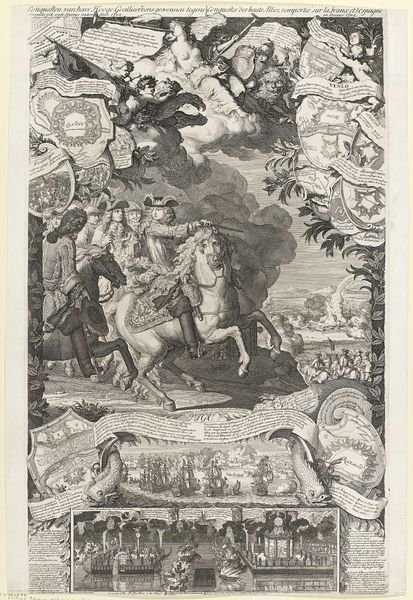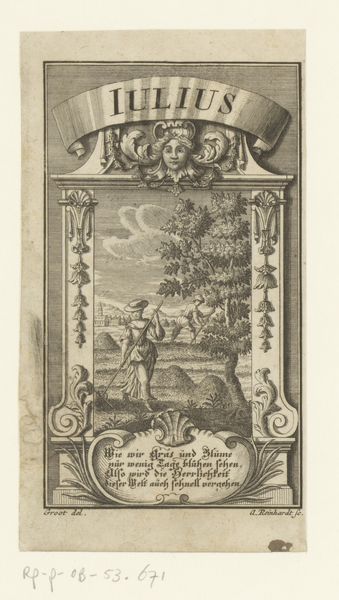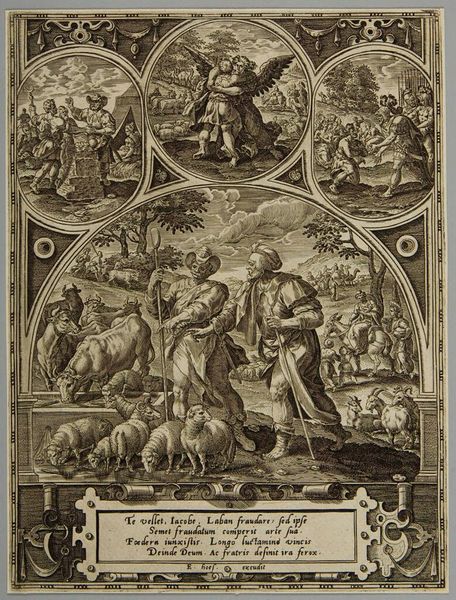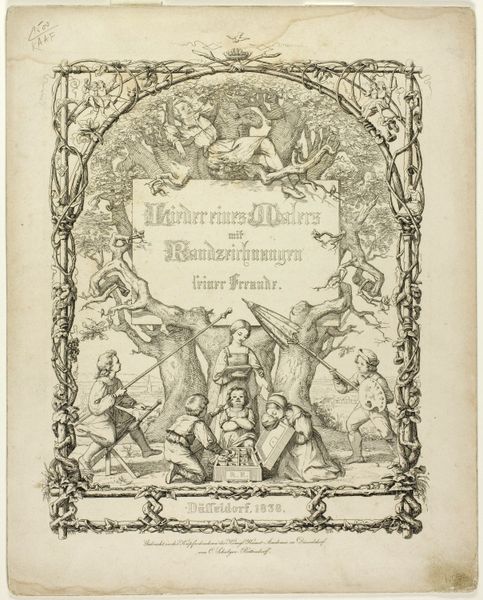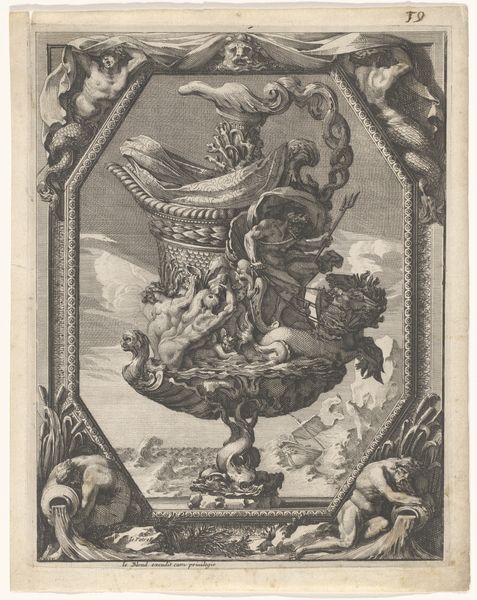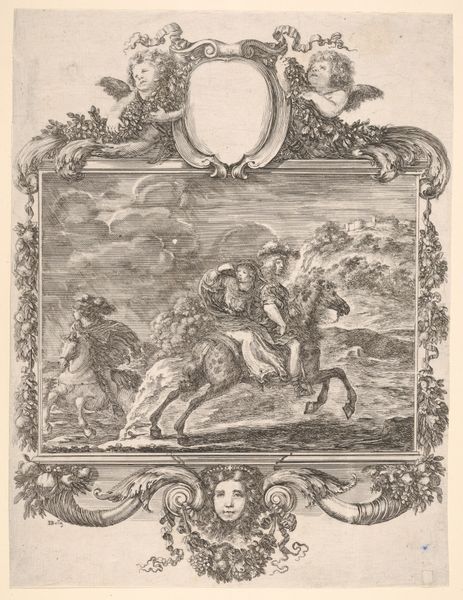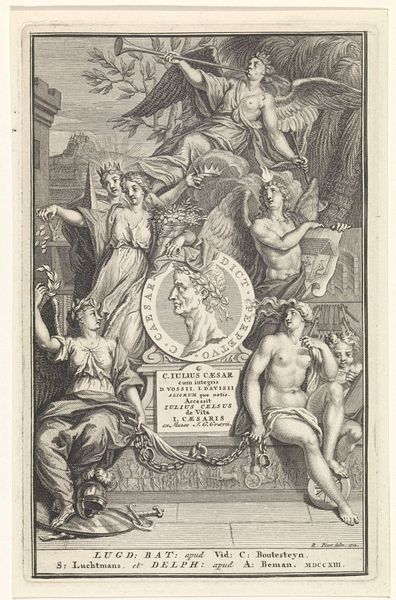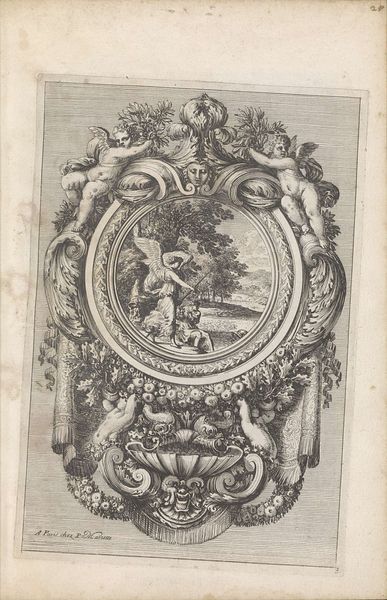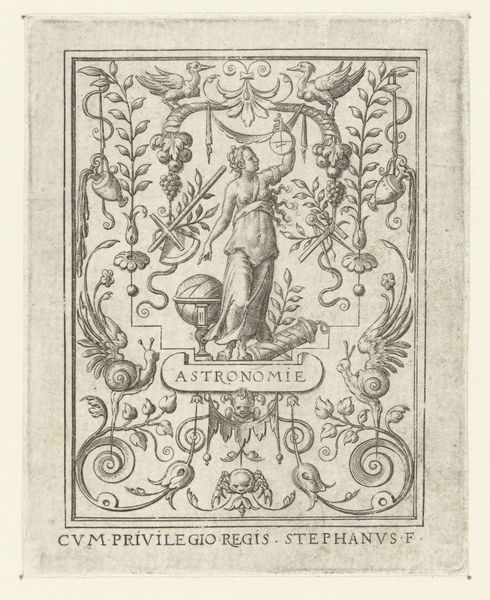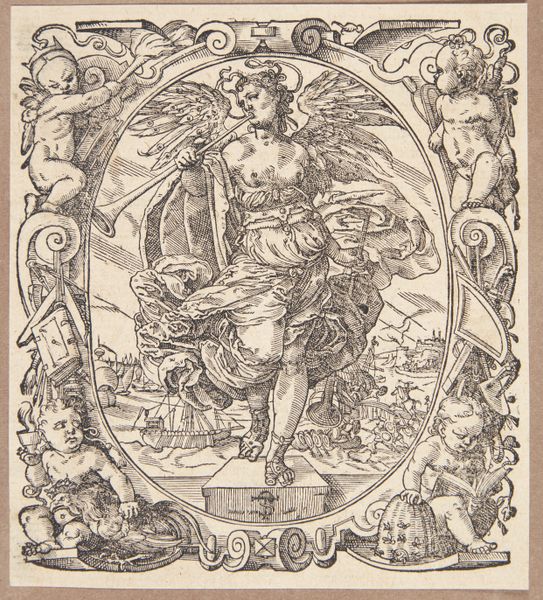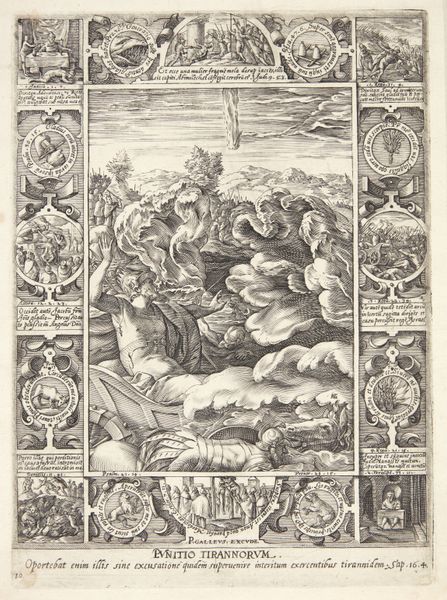
print, metal, engraving
#
baroque
# print
#
metal
#
pen sketch
#
old engraving style
#
figuration
#
pen-ink sketch
#
line
#
pen work
#
history-painting
#
engraving
Dimensions: height 157 mm, width 104 mm
Copyright: Rijks Museum: Open Domain
Curator: What strikes you first about this 1664 engraving titled "Alexander de Grote te paard" or, "Alexander the Great on Horseback?" It is an anonymous work residing here at the Rijksmuseum, and done with metal engraving. Editor: The detail! The composition feels incredibly busy, almost baroque in its density, yet all crafted from metal and lines of etching on the plates used. The texture is wonderful, but the scene it depicts feels somewhat... aggressive, imposing. I wonder about its original social function and reception, given it was released during a time of political shifts. Curator: An astute observation, indeed. Its creation must be viewed within the complex socio-economic web of the Dutch Golden Age. We see here not simply an artistic print, but evidence of a system, the labour of the artisans. Its role speaks to a growing market for accessible historical narratives, reinforcing cultural values for popular consumption through engravings, and potentially reaching further to shape perceptions. Editor: Absolutely. Beyond the technical craft, what story does it tell, and for whom? The depiction of Alexander atop the horse evokes traditional power dynamics and hierarchies, even as his vanquished foes fall beneath his horse’s hooves. This representation of a conqueror, particularly within a burgeoning empire like the Dutch Republic, invites a reading on the ethics of expansion, race and historical dominance, don’t you think? Curator: An interesting interpretation. It's clear that prints like this functioned not merely as decoration, but served didactic purposes too. The work's materiality – the paper, ink, the engraving itself – speaks volumes about dissemination, reproduction, and the accessibility of historical knowledge to a growing audience. It demonstrates that new possibilities of circulating this message became common during that time. Editor: I appreciate that. Considering the original historical context invites questioning and exploration. By looking at this work from this period, one wonders whether these images had unintended resonances with contemporary anxieties and critiques of power in Dutch society. Curator: Looking closer to how these metal-plates were cut in a period where more craft and less industrial standardization was done, is enlightening of an economical boom and greater production in the area. Editor: Indeed! Both production quality and accessibility must be analyzed if one is to grasp this artwork's impact on a rapidly evolving world.
Comments
No comments
Be the first to comment and join the conversation on the ultimate creative platform.
